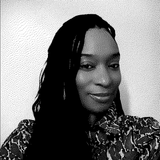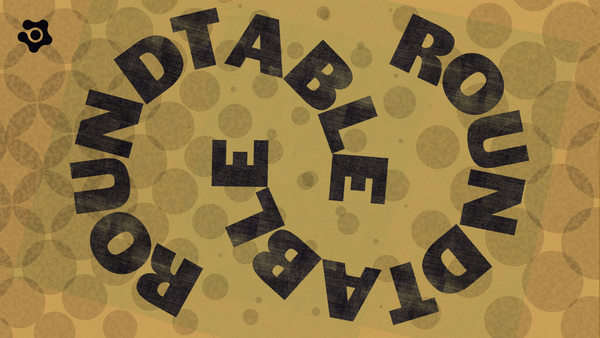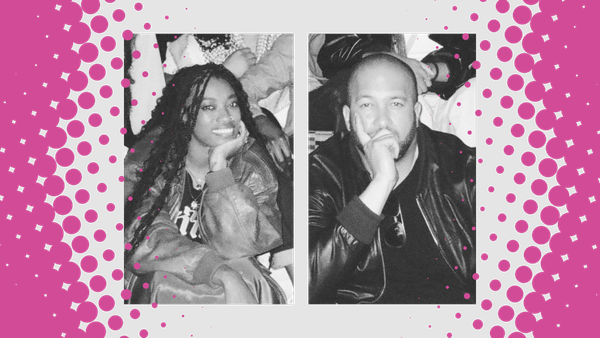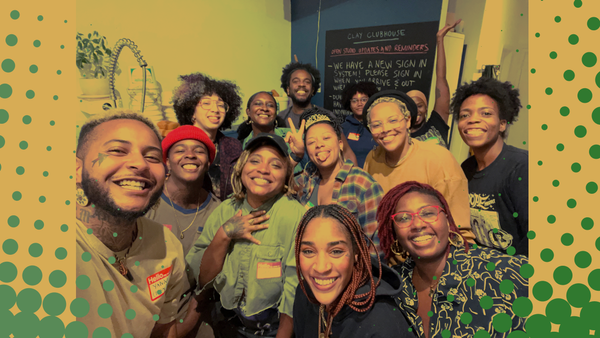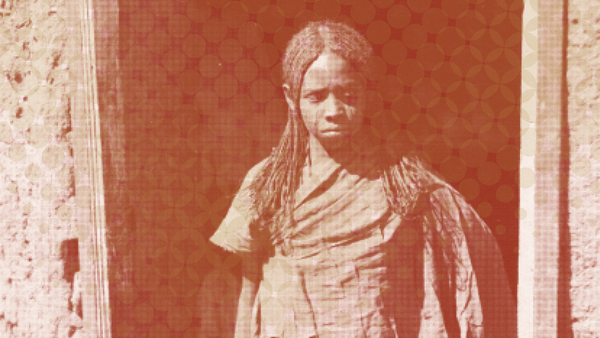Movie Theaters as Modern Underground Railroads: How 'Sinners' Created Freedom Spaces in Plain Sight
For 137 minutes, "Sinners" transforms theaters into Underground Railroad stations—where Black truth flows freely. Darkened spaces become corridors of breath. Tears fall uncensored. And for a moment, liberation exists in plain sight.
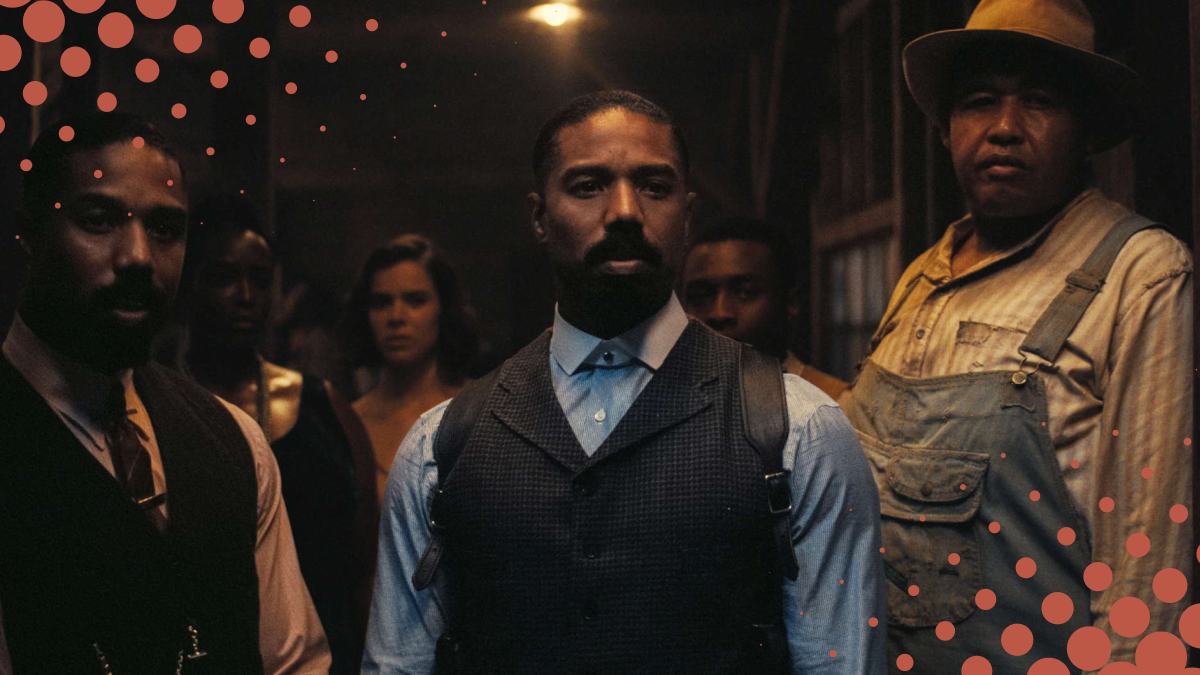
I'm sitting in the back row of a packed theater in Germany, watching Ryan Coogler's Sinners. I'm part of the Black minority in this audience, a stark contrast to the African Americans filling theaters across America. The air is electric nonetheless. When Michael B. Jordan's character delivers a subtle jab about "good white folks" with that signature smirk, even here, across the Atlantic, the theater erupts with the full-bodied, knowing laughter of people who finally feel seen.
When a particularly vicious vampire meets his end (Or does he? This is still debatable), the crowd stands up, cheers, and testifies. A Black woman three rows ahead raises her hand skyward in what could easily be mistaken for a Sunday morning hallelujah.
In that moment, I realize what's happening isn't just entertainment. It's what theorist Hakim Bey might call a "Temporary Autonomous Zone", a space that exists briefly in the cracks of surveillance and control, "before the State can crush it."
When Speaking Your Truth Becomes Dangerous
America in 2025 has become a place where the mere mention of racism can end careers. Where naming discriminatory injustice triggers more outrage than committing it. Where books are banned for acknowledging histories and legacies of anti-Black violence, professors fired for teaching it, and organizations dismantled for addressing it.
CNN's John Blake recently described it as America's "Woke Scare", a climate where "the mere mention of terms like 'racism' or 'diversity' invites retribution." He notes that some scholars are calling this period America's second "nadir" in race relations, echoing the post-Reconstruction era when public expressions of anti-Black sentiment weren't just tolerated but celebrated.
This backlash isn't spontaneous but systematically orchestrated. As revealed in internal documents from Project 2025, far-right strategists have explicitly targeted diversity efforts, planning to
"delete terms such as sexual orientation; gender identity; diversity, equity, and inclusion; gender equity; reproductive health; and reproductive rights out of every federal rule, agency regulation, contract, grant, regulation, and piece of legislation that exists."
In such times, where can Black communities across America go to express their full humanity? Where can they name their pain without fear of repercussion? Where can they acknowledge their collective trauma without being labeled divisive?
The answer, it seems, is a movie theater showing Sinners.
Temporary Autonomous Zones of Resistance
The concept of the Temporary Autonomous Zone (TAZ) perfectly captures what's happening in theaters showing Sinners. These are spaces that, as Bruce Sterling describes, "spring up again somewhere else, once again invisible because undefinable in terms of the Spectacle." The movie theater becomes a nomadic site of resistance that "conquers without being noticed and moves on before the map can be adjusted."
These cinemas showing Sinners have become exactly that, spaces where, as Blake observes, "Black people and their allies can sit in a darkened theater and still believe that Black lives matter" without worrying about "getting fired, arrested or losing their funding."
The significance of these spaces is magnified by the systematic dismantling of formal protections. In February 2025, the US Department of Education sent out directives to educational institutions to "cease using race preferences and stereotypes" in all activities—from admissions to hiring to scholarships—with threats to cut federal funding for non-compliance. The directive explicitly describes diversity initiatives as "racial preferences" and DEI as a "regime" accompanied by "widespread censorship."
As journalist Luc Olinga points out,
"DEI has become the new N-word. It's the latest cloak for racism, the flag that racists now wrap themselves in to publicly express their prejudices, clichés, and stereotypes."
In a world where even the language to name oppression is being systematically erased, these temporary zones of freedom become necessary for survival.
Consider the context: just weeks after the film's release, a Minnesota woman who was filmed calling a Black child the N-word received over $780,000 in donations. Meanwhile, the acquittal of officers who killed Tyre Nichols barely registered in the news cycle.
Against this backdrop, a darkened theater becomes a revolutionary site.
When a character in Sinners says, "We was never going to be free," the line lands like prophecy. The collective sigh that rippled through my theater was the sound of people who, for a brief moment, don't have to pretend everything is fine.
The Guerrilla Tactics of Cultural Resistance
For 2 hours and 17 minutes, Sinners creates what the Underground Railroad once did: a corridor of breath. In the theater’s dark, there are no blue lights. No curriculum bans. No microaggressions performed with a smile. Here, Blackness is not a performance for white comfort. It is unapologetic.
Just as the Underground Railroad operated through coded symbols intelligible only to those seeking freedom, today's cultural resistance requires similar tactics. As Sterling writes about Temporary Autonomous Zones:
"The TAZ is like an uprising which does not engage directly with the State...it can 'occupy' these areas clandestinely and carry on its festal purposes for quite a while in relative peace... because they never intersected with the Spectacle, never appeared outside that real life which is invisible to the agents of Simulation."
Similarly, Coogler has created something that functions on two levels: to casual viewers, Sinners is simply a stylish vampire movie set in the Jim Crow South. To those with eyes to see, it's a radically honest portrayal of America's ongoing racial parasitism, where Black culture is consumed while Black bodies remain disposable.
The brilliance lies in the plausible deniability. Critics praise the film's "atmospheric tension" and "creative mythology," while missing how the vampire Remmick's line "We believe in equality" while flashing a predatory smile mirrors every hollow corporate diversity statement issued since 2020.
And because it's "just a horror movie," Black audiences can respond honestly without fear of being monitored, recorded, or reported to HR. For 137 minutes, the masks can come off.
The Invisibility Tactic of Darkened Theaters
There's something almost sacred about the darkness of a movie theater, a shared anonymity that paradoxically allows for greater authenticity. In the dark, no one can see your tears. No one can police your reactions. No one can demand that you make your pain more palatable.
This invisibility is precisely what makes the theater experience a successful TAZ. As Sterling writes, "The defense is 'invisibility,' a martial art... The strike is made at structures of control, essentially at ideas." In the darkness, protected from surveillance, genuine responses can emerge without fear of retaliation. The theater becomes
"an encampment of guerilla ontologists: strike and run away."
This is what makes "Sinners" more than a film—it's become a ritual, a gathering place, and a spiritual site of sorts. People are seeing it multiple times, bringing friends, and organizing group viewings. In an America implementing what Project 2025 calls an "equity purge in government," where civil servants who participated in diversity initiatives can be "identified and susceptible to potential sanction or termination," the darkened theater offers a temporary respite from constant surveillance, a place where, for just over two hours, you can exist without performing the emotional labor required to navigate white fragility.
The Price of Admission
The tragedy, of course, is that these spaces are temporary. When the credits roll and the lights come up, everyone must return to a world where naming racism often carries greater consequences than committing it.
As Sterling writes,
"The TAZ must be capable of defense...The most the TAZ can hope for in certain cases is to exist unnoticed...and when it finally breaks up, hopefully because it has gotten what it wanted rather than because the law had tracked it down, it will leave no trail at all."
This is the bitter truth at the heart of Sinners success: its necessity is also an indictment. In a healthy society, people wouldn't need horror movies as the only safe venue to process collective trauma. They wouldn't need fictional vampires to talk about real-world predators.
Yet in our current times, filing into darkened rooms to watch monsters on screen because discussing the monsters in American institutions, policies, and history has become too dangerous.
Like the original Underground Railroad, these theaters represent both resistance and retreat—evidence of human resilience, yes, but also testaments to the hostile landscape that makes such spaces necessary.
Planning Autonomy Through Cultural Resistance
As I left the theater that night, I watched people lingering in the lobby, reluctant to leave. Strangers struck up conversations, sharing reactions and interpretations. I overheard one man say to another, "Man, did you feel that? We needed this."
As Sterling observes, "Only the autonomous can plan autonomy, organize for it, create it. It's a bootstrap operation." These spontaneous post-film discussions exemplified people instinctively building community and planning autonomy together before dissolving back into the world.
Ryan Coogler may not have set out to create a modern Underground Railroad station or a Temporary Autonomous Zone. But in America's second racial nadir, that's exactly what Sinners has become—a passage to temporary freedom, a place where the truth can be spoken, and a space where the journey toward collective liberation continues, even if only for 137 minutes at a time.
And in 2025 America, that's no small thing.
"For 2 hours and 17 minutes, Black people and their allies can sit in a darkened theater and still believe that Black lives matter. They can escape into a story where Black characters affirm their anger and disenchantment—and not have to worry about getting fired, arrested or losing their funding." – John Blake, CNN

